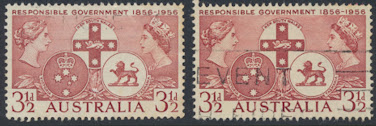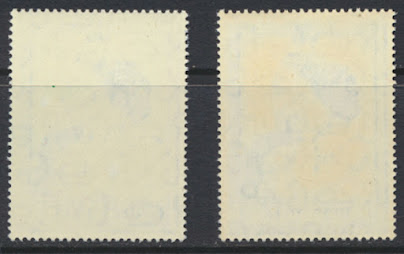Part II - Cleaning Stamps
I split this article into two part. I hope this second and final part is interesting, especially the images.
Now let’s
take this theme of cleaning the stamp one step further. And in this case I want
to talk a little about removing self-adhesive stamps from their envelope of
use.
Early
self-adhesive stamp actually soaked off the envelope quite easily. This can be seen in UK and Australia
stamps for example. But more recent
self-adhesive gums are in fact produced to be so “adhesive” they do not allow the stamp to be soaked from the
envelope. A massive loss to the beginner stamp collectors of this world - well that is the old school talking isn’t it!
But
seriously, for example, let’s take the Great Britain Security Machins – introduced
in 2009 with new security features, namely no water soluble
layer of gum between the paper of the stamp and the self-adhesive and the U shaped security slits. The absence of the water soluble gum made the removal of the stamp from an envelope rather difficult – certainly a
soak in warm water did not work - and
the security slits were designed such that if an attempt was made to remove the
stamps from the envelope the paper in
the slits would be removed from the stamp.
The security slits were also designed to prevent forgery I might add.
Many
collectors who now collect Security Machins are collecting the stamps “on
piece”. In fact if one reads the Stanley
Gibbons Catalogue about these Security Machins you will see they
say “We recommend that used stamps are
retained on their backing paper and trimmed with a uniform border of 1-2mm
around all sides, taking care not to cut into the perforations”
But this
has not stopped many people from finding a way to remove the Security Machin
stamp from the backing paper. On a personal note, I do not endorse this
practice. I know many who do and you can find many sellers with Security
Machins in their internet stamp shops “off paper”.
The
chemical concoctions used vary quite widely. There are pages and pages of
guidance and advice on how to remove these and many other modern self-adhesives
stamps “safely” with no damage.
Personally I think adding a chemical of any sort to this type of stamp
is going to cause some “damage’ in some form or another, or shall we say some
change in the stamp. Many tell me I am
wrong and I understand there are varying opinions on this. Maybe each stamp and
each type of cleaning material will give
difference results.
So in summary, three last points:
1) The stamp is yours and what you do with it to please yourself and
please how you have it in your collection is your choice.
2) If you are buying a Security Machin - or any
other modern self-adhesive for that matter -
from an internet stamp sellers store
- Buyer beware – the scanned or
photographed image may not actually tell you all you need to know about the
condition of the stamp.
3) If you are doing the removing yourself, once
you have started to remove the stamp from the envelope / backing paper with one
of the treatments there is no turning back – damage done cannot be repaired –
it won’t recover like the hair on my daughters head!
I
hope you like the images. Most are mine, some are from a friend who helped me
understand a bit about soaking Security Machins and one, well I just happened
across them!
Health and safety note 😃 : only two stamps were “damaged” and
thrown away in the making of this article.
Michael cddstamps.com















